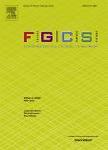版权所有:内蒙古大学图书馆 技术提供:维普资讯• 智图
内蒙古自治区呼和浩特市赛罕区大学西街235号 邮编: 010021

作者机构:Cardiff Univ Cardiff Wales Indian Inst Technol Ropar Rupnagar India Princess Nourah bint Abdulrahman Univ Riyadh Saudi Arabia Azzaytuna Univ Tarhuna Libya King Saud Univ Riyadh Saudi Arabia Prince Sattam Bin Abdulaziz Univ Al Kharj Saudi Arabia
出 版 物:《FUTURE GENERATION COMPUTER SYSTEMS-THE INTERNATIONAL JOURNAL OF ESCIENCE》 (Future Gener Comput Syst)
年 卷 期:2025年第166卷
核心收录:
学科分类:08[工学] 0812[工学-计算机科学与技术(可授工学、理学学位)]
主 题:Artificial intelligence Distributed systems Edge computing Internet of things Machine learning
摘 要:The Internet of Things (IoT) and Edge-Cloud Computing have been trending technologies over the past few years. In this work, we introduce the Enhanced Optimized-Greedy Nominator Heuristic (EO-GNH), a framework designed to optimize machine learning (ML) and artificial intelligence (AI) application placement in edge environments, aiming to improve Quality of Service (QoS). Developed specifically for sectors such as smart agriculture, industry, and healthcare, EO-GNH integrates asynchronous MapReduce and parallel meta- heuristics to effectively manage AI applications, focusing on execution performance, resource utilization, and infrastructure resilience. The framework carefully addresses the distribution challenges of AI applications, especially Service Function Chains (SFCs), in edge-cloud infrastructures. It contains Data Flow Management, which covers aspects of data storage and data privacy, and also considers factors like regional adaptations, mobile access, and AI model refinement. EO-GNH ensures high availability for forecasting, prediction, and training AI models, operating efficiently within a geo-distributed infrastructure. The proposed strategies within EO-GNH emphasize concurrent multi-node execution, enhancing AI application placement by improving execution time, dependability, and cost-effectiveness. The efficiency of EO-GNH is demonstrated through its impact on QoS in real-time resource management across three application domains, highlighting its adaptability and potential in diverse cross-domain IoT-based environments.